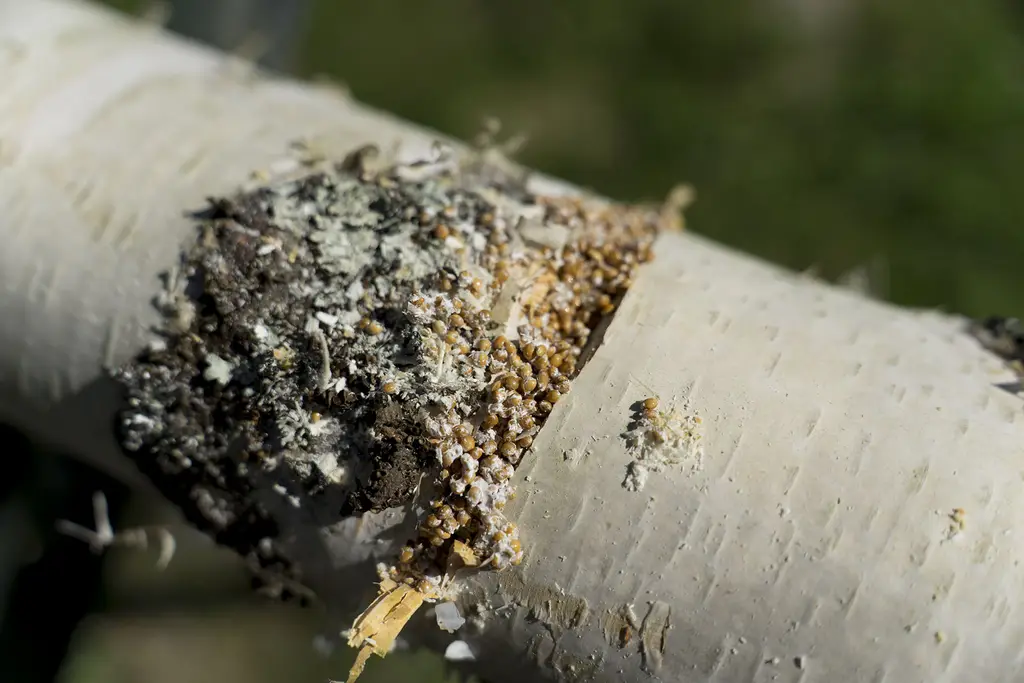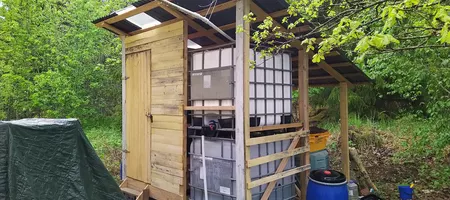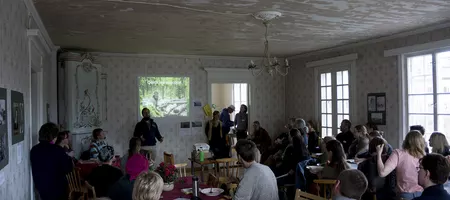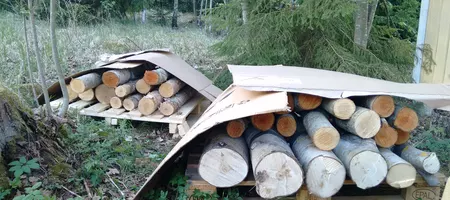In 2017, we started our little mushroom production. Back then, I got my Shiitake substrate from Germany or Austria, usually grain or sawdust substrate in grow bags. The harvest was always very good.
In order to source my substrate from a more local supplier, I went for Helsieni in 2019. At that time, Helsieni didn’t sell any substrate bags, so I went for dowels. The first batch I got was actually pretty good. The Shiitake looked a little different than those grown from German substrate, but the taste was more or less the same.
Moving to dowels
The following two years, I continued with dowels, but I wasn’t happy with the dowels I received. They were watery and had hardly any white mycelium visible. When I inoculated the logs, I was already in doubt that anything would grow – and yet, nothing grew. The year after that, I had to deal with the same problem: the dowels arrived in a watery, non-white condition. Again, no harvest.
It might have been me, too, of course. Friends of mine were successfully growing mushrooms with dowels. Could be that I didn’t wait long enough after I felled the tree or that I missed something else. Who knows.
Back on substrate
Anyway, after I got two bad batches, I ordered from Austria again. I got several varieties, mainly Oyster in grow bags. Instead of logs, I inoculated raised beds with sawdust – and yes, I got some harvest. But I didn’t compress the sawdust, therefore the harvest was little. But I was back on track when it came to grow bags instead of dowels.
I also experimented with growing my own mycelium on substrate. I used compressed sawdust in big jars – and yes, I got Oyster and Shiitake mycelium that I then could spread further.
Unfortunately, I then didn’t have any time to continue with my mushroom experiments.
Mycelium dowels – never again
During the 2023 Permaculture Design Course here at Beyond Buckthorns, I argued during an evening session that dowels should have never hit the consumer market. They are more or less a nightmare since the wood surface to mycelium contact ratio is extremely low compared to a diagonal slit-cut log. For a 1-meter log with a 20 cm diameter, you would need up to 70–100 dowels per meter of log to match the contact surface area created by just two deep chainsaw slits. Each slit offers thousands of square millimetres of surface for the mycelium to colonize, and when filled with nutrient-rich grain spawn, it creates ideal conditions for fast and reliable mushroom growth.
According to different mushroom growers, a meter of log requires about 50 dowels. 50 dowels of Shiitake cost 10 € in Finland.
But: For 30 €, I get 2–3 kg of substrate in grow bags. 1 kg is enough for 10 meters of logs. So 3 kg could give me 30 meters. So, if I buy 1 kg of substrate for 15 €, I can inoculate 10 logs á 1 meter. Instead of paying 10 € for 50 dowels for 1 meter. If I would inoculate 10 logs á 1 meter with dowels, I would need 500 dowels, which would cost me 100 €.
Hence, my personal opinion is that mycelium dowels are an overpriced product for the consumer market.
Comparison of dowels and slit-cut method
| Category | Dowel Inoculation | Slit Cut Inoculation |
|---|---|---|
| Plus | - Easy and beginner-friendly - No power tools needed - Clean, standard process - Low drying risk when sealed | - Large contact surface for fast colonization - Fewer inoculation points needed - Grain spawn = nutrient-rich - Much more cost-effective |
| Minus | - Needs 50–100 plugs per log for good results - Expensive (e.g., 1000 plugs ≈ 200 €) - Slower colonization - Labour-intensive | - Requires chainsaw and experience - Logs can dry out if not protected - Application is messier - Less standardized |
| Interesting | - Equivalent contact area needs hundreds of plugs - Slower mycelium spread from plug - Popular for hobbyists | - Grain spawn colonizes aggressively - Efficient for semi-pro or farm-scale setups - Well suited to moist/cool climates |
So, I suggest you forget about dowels and go for substrate. It is cheaper, especially if you want to inoculate more than one log. If you just want to try it once on one log, the dowels are just fine (but expensive).
Experimenting with Pioppino and Oyster
So, in 2025, I’m back using slit cuts – this time not straight but diagonal = highest surface-to-mycelium contact ratio.
50% of the logs I inoculated with Pioppino substrate, which I brought with me from my trip to Germany.
The other 50% I inoculated with Oyster substrate.
Below is a time-lapse video of me inoculating the birch with Pioppino.







